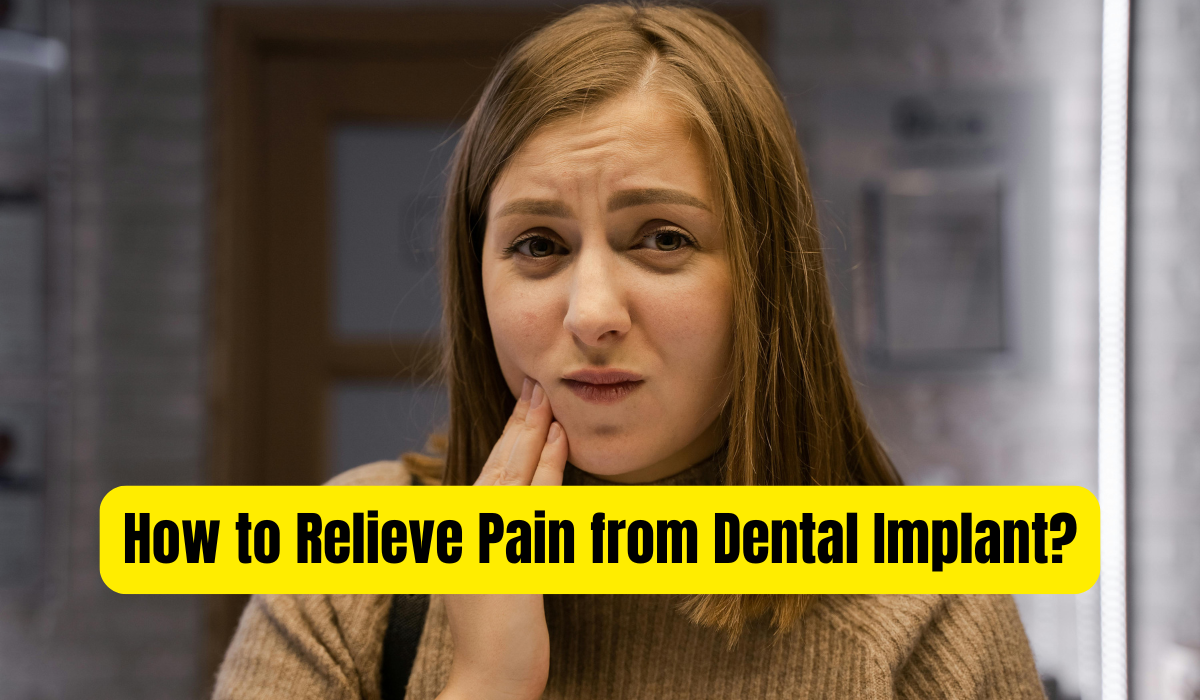Dental implants have revolutionized restorative dentistry, offering a long-lasting solution to missing teeth. However, pain after a dental implant procedure is a common concern that can affect the recovery process. While some discomfort is expected, prolonged or severe pain must be addressed appropriately to ensure healing. At Health Tips Buddy, we explore effective strategies how to relieve pain from dental implants, ensuring a smoother and more comfortable recovery.
Understanding Dental Implant Pain
After undergoing a dental implant procedure, patients may experience pain, swelling, and minor bleeding. These symptoms are typically part of the body’s natural healing process. The pain is usually localized, peaking within the first 72 hours, and should gradually subside within a week. However, when pain becomes persistent or intensifies after several days, it may indicate complications such as infection, nerve damage, or implant failure.
Immediate Post-Operative Care
1. Apply Cold Compresses
Applying a cold compress to the outside of the cheek near the implant site within the first 24–48 hours helps reduce swelling and numbs the area, minimizing pain. We recommend 15-minute intervals of cold application, followed by 15 minutes of rest.
2. Follow Prescribed Medications
Your oral surgeon will likely prescribe anti-inflammatory drugs and antibiotics. Take them exactly as directed. Ibuprofen or acetaminophen are commonly recommended for pain management. Never exceed the dosage, and avoid combining medications without professional guidance.
Natural Pain Relief Methods
1. Saltwater Rinses
A gentle warm saltwater rinse (½ teaspoon of salt in a glass of warm water) promotes healing and prevents infection. Rinse 2–3 times a day, especially after meals, to cleanse the area without disturbing the surgical site.
2. Clove Oil Application
Clove oil contains eugenol, a natural anesthetic and anti-inflammatory agent. Dab a cotton swab in clove oil and gently apply it to the gum area surrounding the implant. This method provides temporary but effective relief from throbbing pain.
3. Turmeric Paste
Turmeric’s active compound, curcumin, has powerful anti-inflammatory properties. Create a paste using turmeric and water or coconut oil and apply it to the sore area. Leave it for 10–15 minutes before rinsing thoroughly.
Dietary Recommendations to Reduce Pain
1. Stick to a Soft Food Diet
Consuming hard or crunchy foods can irritate the implant site. Stick to a soft food diet for at least one week. Opt for:
- Mashed potatoes
- Smoothies
- Soups (lukewarm, not hot)
- Yogurt
- Scrambled eggs
Avoid hot, spicy, and acidic foods that may aggravate inflammation.
2. Stay Hydrated
Drink plenty of water to stay hydrated, as this supports overall healing. Avoid alcohol and caffeinated beverages, which may interfere with recovery and increase inflammation.
Maintain Oral Hygiene Carefully
Proper oral hygiene is crucial to prevent infection—a leading cause of implant pain. However, aggressive brushing or flossing can worsen the discomfort.
- Use a soft-bristled toothbrush
- Avoid the implant site for the first few days
- Switch to an antibacterial mouthwash recommended by your dentist
- Avoid using electric toothbrushes near the area during the early healing phase
When to Seek Professional Help
While some pain is expected, certain signs warrant immediate attention:
- Persistent or worsening pain after 7 days
- Swelling that increases instead of subsiding
- Fever or foul taste, which may indicate infection
- Pus discharge or gum recession around the implant
- Numbness or tingling in the tongue, lips, or chin
These could be symptoms of peri-implantitis, nerve injury, or even implant rejection. Timely intervention can prevent serious complications.
Advanced Pain Relief Options
1. Laser Therapy
Low-level laser therapy (LLLT) promotes faster healing and provides pain relief by stimulating cellular activity. Some dental offices offer this as part of post-implant care.
2. Guided Tissue Regeneration
For cases involving bone or gum tissue damage, guided tissue regeneration may be needed to support implant integration and relieve chronic pain.
3. Bite Adjustment
Sometimes, improper bite alignment can cause pressure and pain around the implant. A dental professional can adjust the crown or bridge to balance the occlusion.
Preventing Future Pain and Complications
1. Choose an Experienced Implant Dentist
The success of a dental implant procedure heavily relies on the skill of the practitioner. A board-certified oral surgeon or periodontist can minimize trauma and ensure proper placement, reducing post-operative pain.
2. Follow Aftercare Instructions Precisely
Adhering to your dentist’s aftercare guidelines minimizes risk and promotes faster healing. This includes attending follow-up appointments, avoiding smoking, and not skipping medications.
3. Regular Dental Checkups
Post-implant checkups help monitor the implant’s integration and overall oral health. Routine evaluations ensure that any issues are identified and managed early.
Conclusion
Relieving pain from a dental implant involves a combination of proper aftercare, smart dietary choices, natural remedies, and medical interventions when needed. While some discomfort is natural, severe or prolonged pain requires professional evaluation. Patients can ensure a smooth and comfortable recovery journey by following best practices and maintaining diligent oral hygiene.
